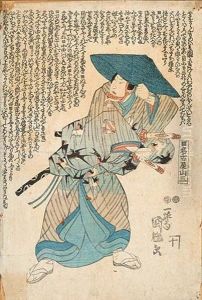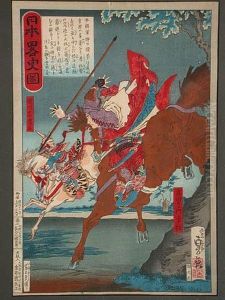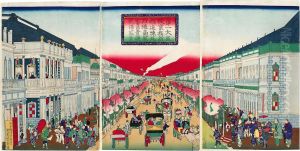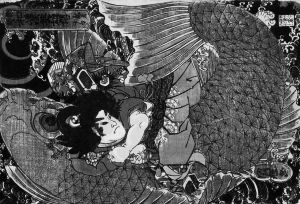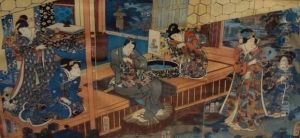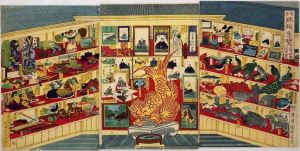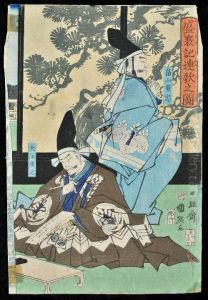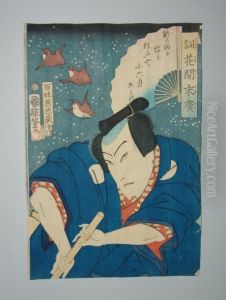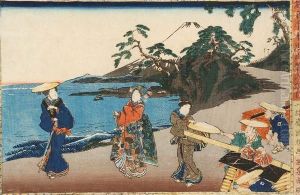Kuniteru Paintings
Utagawa Kuniteru was a Japanese woodblock print artist, one of the many talented designers during the late Edo and early Meiji periods. He was born in 1808 in Edo (present-day Tokyo), Japan. Kuniteru was a pupil of the Utagawa school, which was one of the most dominant and prolific schools of Japanese woodblock printing, and he studied under Utagawa Toyokuni I. However, Kuniteru is sometimes confused with other artists sharing the same name from the same school, which can make attributions challenging for art historians.
Kuniteru's work encompasses a wide range of ukiyo-e genres, including kabuki actor prints (yakusha-e), beautiful women (bijin-ga), historical scenes, and landscapes. Like his contemporaries, he produced single-sheet prints as well as series, and his work is characterized by vivid colors and dynamic compositions. During his career, Kuniteru also created illustrations for books and other printed materials, which was a common practice for artists of the Utagawa school.
Despite Kuniteru's productivity, he did not achieve the same level of fame as some of his peers, such as Utagawa Hiroshige or Kuniyoshi. Nonetheless, his prints are appreciated for their craftsmanship and contribution to the ukiyo-e genre. In the later part of his career, Kuniteru, like many ukiyo-e artists, witnessed the decline of the traditional woodblock print industry due to the modernization of Japan and the introduction of Western technology and aesthetics.
Kuniteru passed away in 1876, leaving behind a body of work that reflects the transitional period of Japanese art from the isolationist Edo period to the more globally interactive Meiji era. His prints continue to be studied and collected, offering insights into the cultural and artistic dynamics of 19th century Japan.
